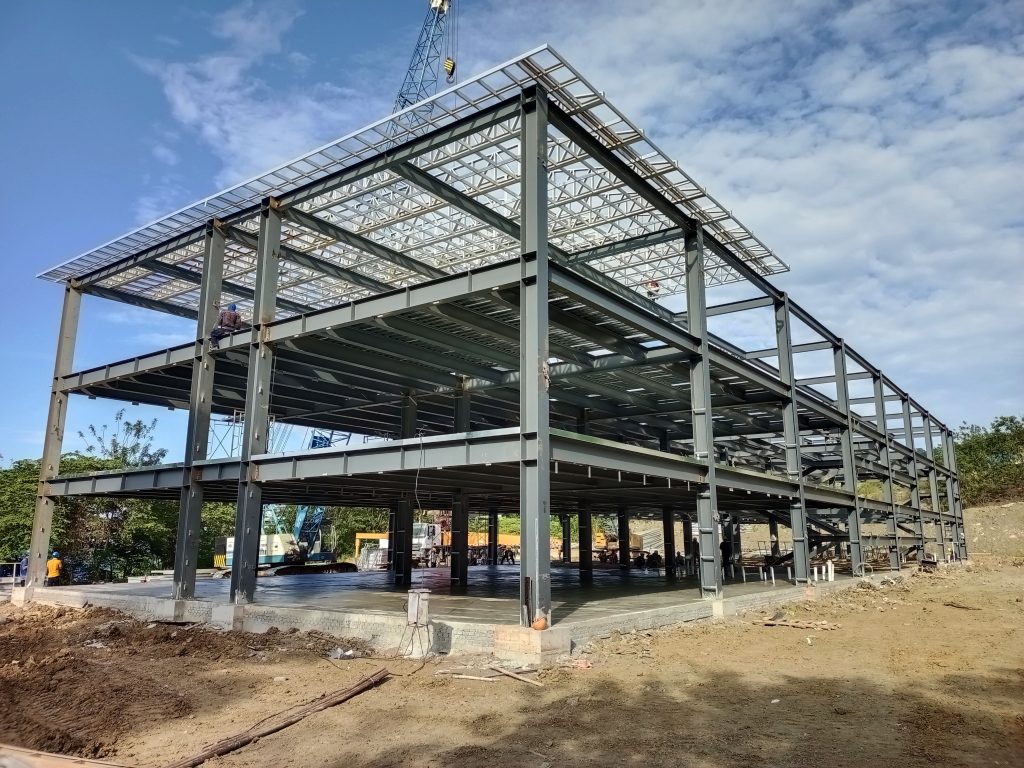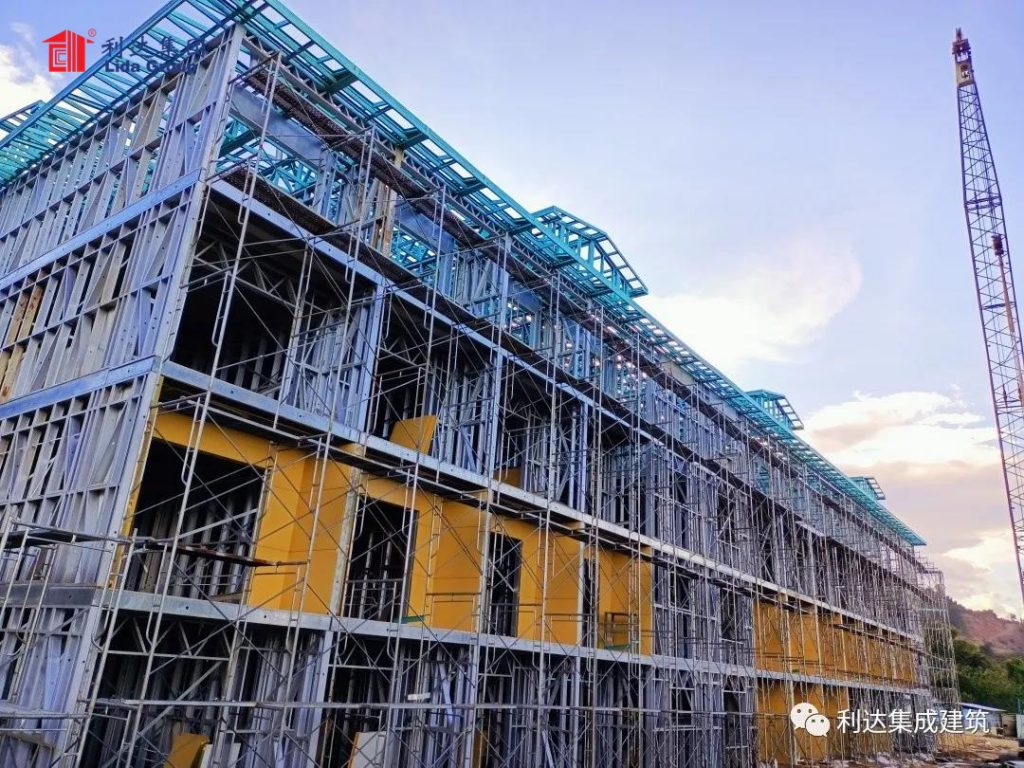The foundation is the crucial base that supports an entire steel structure above ground, so its type and design must adequately carry anticipated loads without failure or excessive settlement. Engineers evaluate several factors when selecting the most suitable foundation system.
Subsoil conditions greatly influence choices. Stiff, dense soils with adequate bearing capacity can often support shallow foundations. However, in soft soils, pile foundations transfer loads below the weak layer to stronger strata. Test borings characterize subsurface profiles to depths below proposed foundations.
Building loads also drive decisions. Light non-occupied structures like agricultural buildings withstand lighter foundations than industrial facilities loaded with heavy equipment. Footprint size and column/wall spacing also impact foundation sizing and layout.

Construction considerations matter. Environmental factors may preclude disrupting sensitive habitats when excavating. Nearby buildings constrain new footings. Accessibility for large equipment installing deep foundations may be limited in tight urban sites.
Life and risk factors are analyzed. Foundations supporting emergency response facilities require higher reliability than ordinary buildings. Seismic or flood zones necessitate special designs. Cost-benefit trade offs also factor into robust but affordable solutions.
Common foundation options include:
– Pad/Spread footings distribute column/wall loads across a broad, flat base bearing on soils. Suited for backfilled sites with adequate soil bearing/settlement properties.
-Strip footings lay continuous runs under walls. Joints must resist differential movement.
-Mat/raft slabs form monolithic footing plates under a building. Reinforced concrete mats resist bending and are used with mat piles.

-Driven piles induce compressive stresses via impact or vibratory driving into dense bearing strata. H-piles, pipe piles suit light/heavy loads respectively.
-Drilled shafts, or caissons, comprise large-diameter holes excavated then filled with concrete hosting embedded rebar cages. Used where pile driving may cause vibrations.
-Micropiles use grouted reinforcement bars or hollow bars pressure-grouted during installation as building foundations or underpinning.
-Helical piers form a screw-type configuration that provides high pullout capacity in cohesive soils. Used for light structures.
In conclusion, comprehensive geotechnical study, structural demands, environmental factors and construction/long-term considerations all influence selection of the most appropriate foundation system to efficiently and reliably support a steel building over its lifespan.

Related news
-
Standard Types and Sizes of Steel Sections Used in Construction
2023-09-07 13:58:01
-
Considerations for Designing Long Span Steel Truss Systems
2023-09-07 11:51:55
-
Steps in Erecting a Steel Structure for a High Rise Building
2023-09-07 11:37:19
contact us
- Tel: +86-532-88966982
- Whatsapp: +86-13793209022
- E-mail: sales@lidajituan.com


